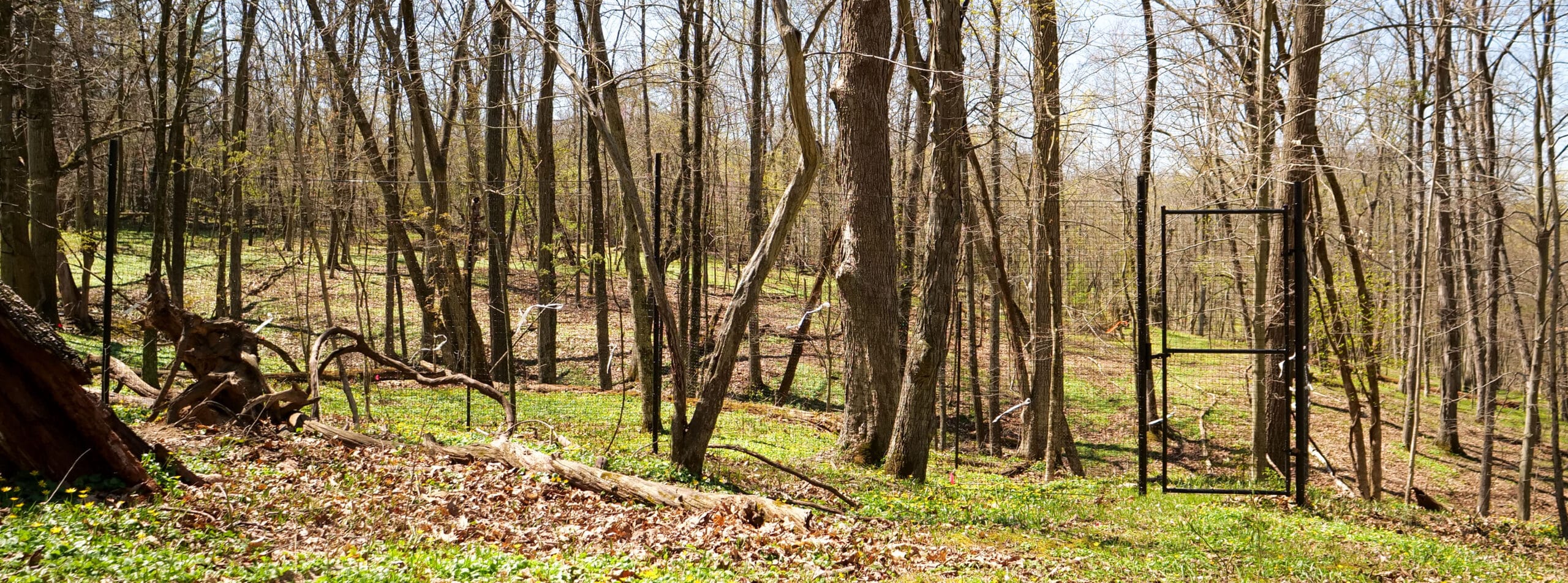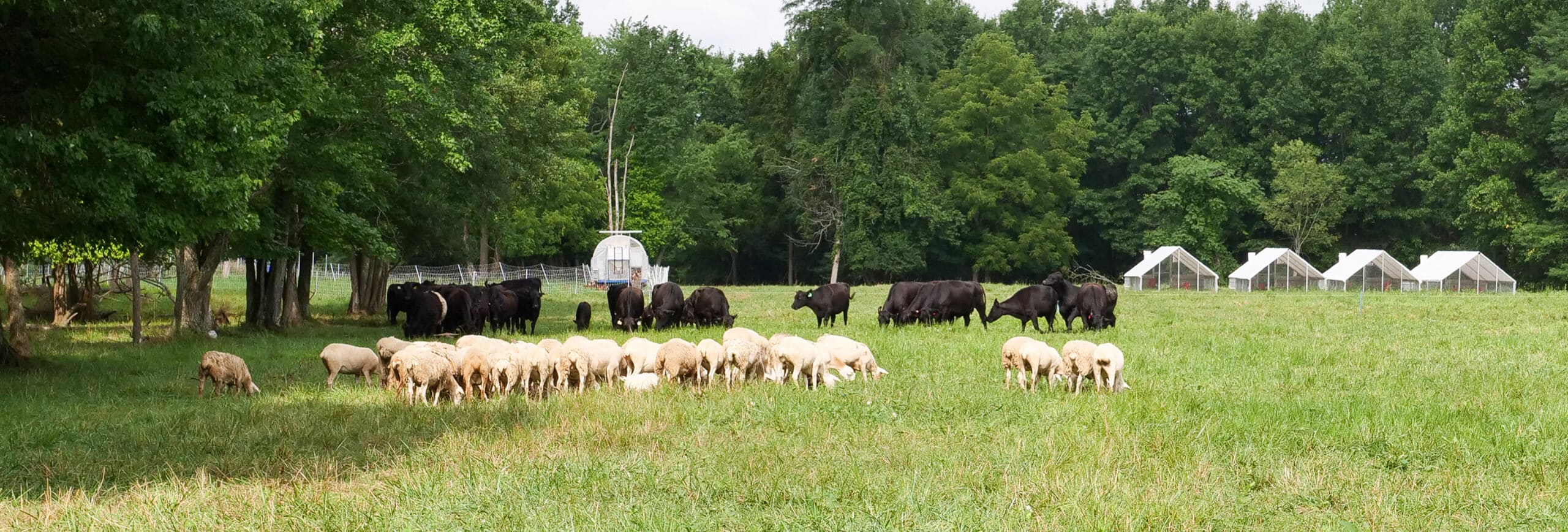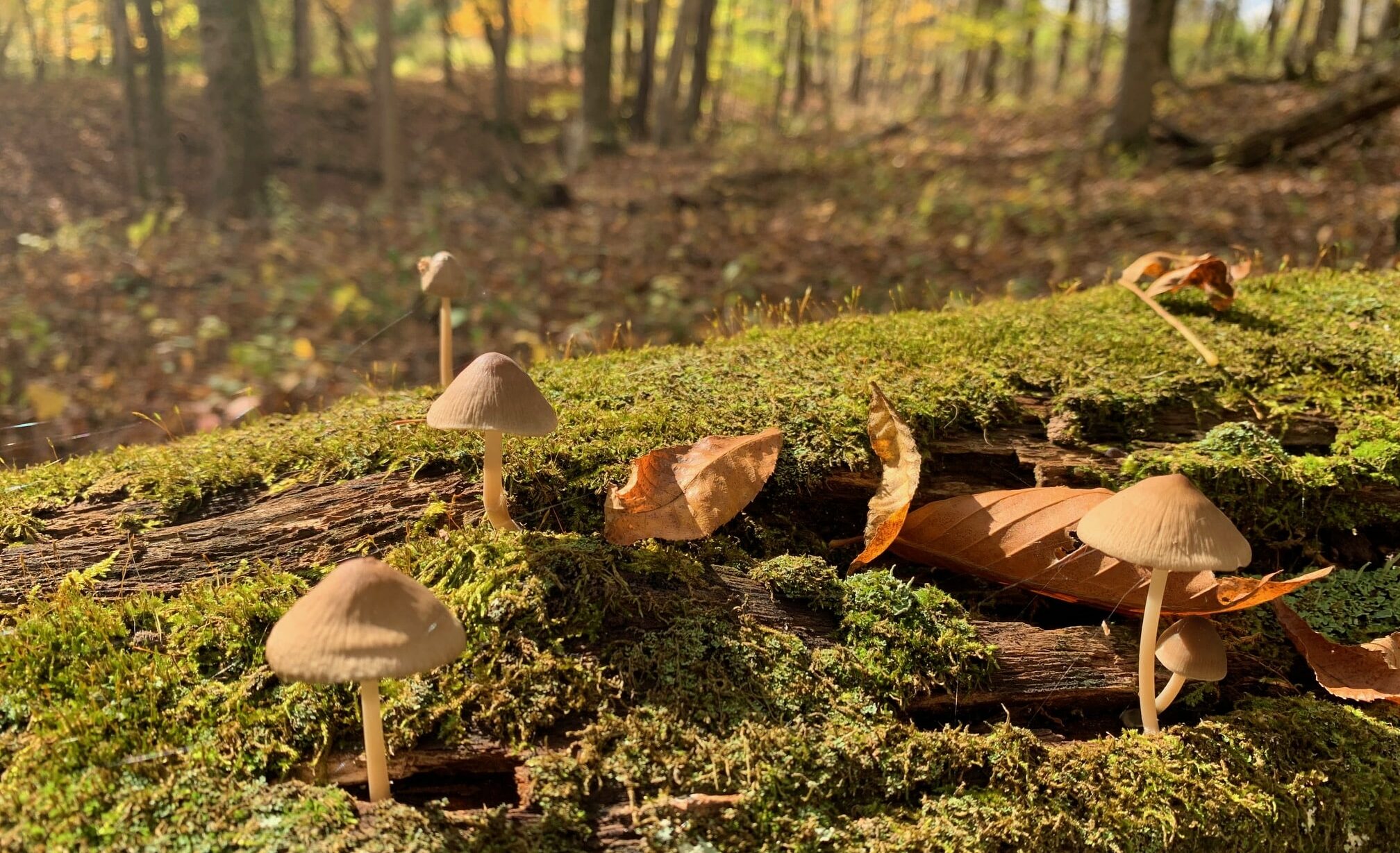ECOLOGICAL MONITORING
LONG-TERM WOODLAND MONITORING
Overview
Tree, vegetation, soil and faunal data are collected seasonally across Greenacres’ woodlands to understand the forest ecosystems and how they may be changing over time. Long-term monitoring provides us with baseline data about the flora and fauna living in our woodlands. Across sites, we have an understanding of the types of spring wildflowers growing, the diversity of tree species and the impact invasive species are having in our forests. As we implement management strategies in these woodlands, ecological monitoring is used to assess their impact and inform future management decisions.
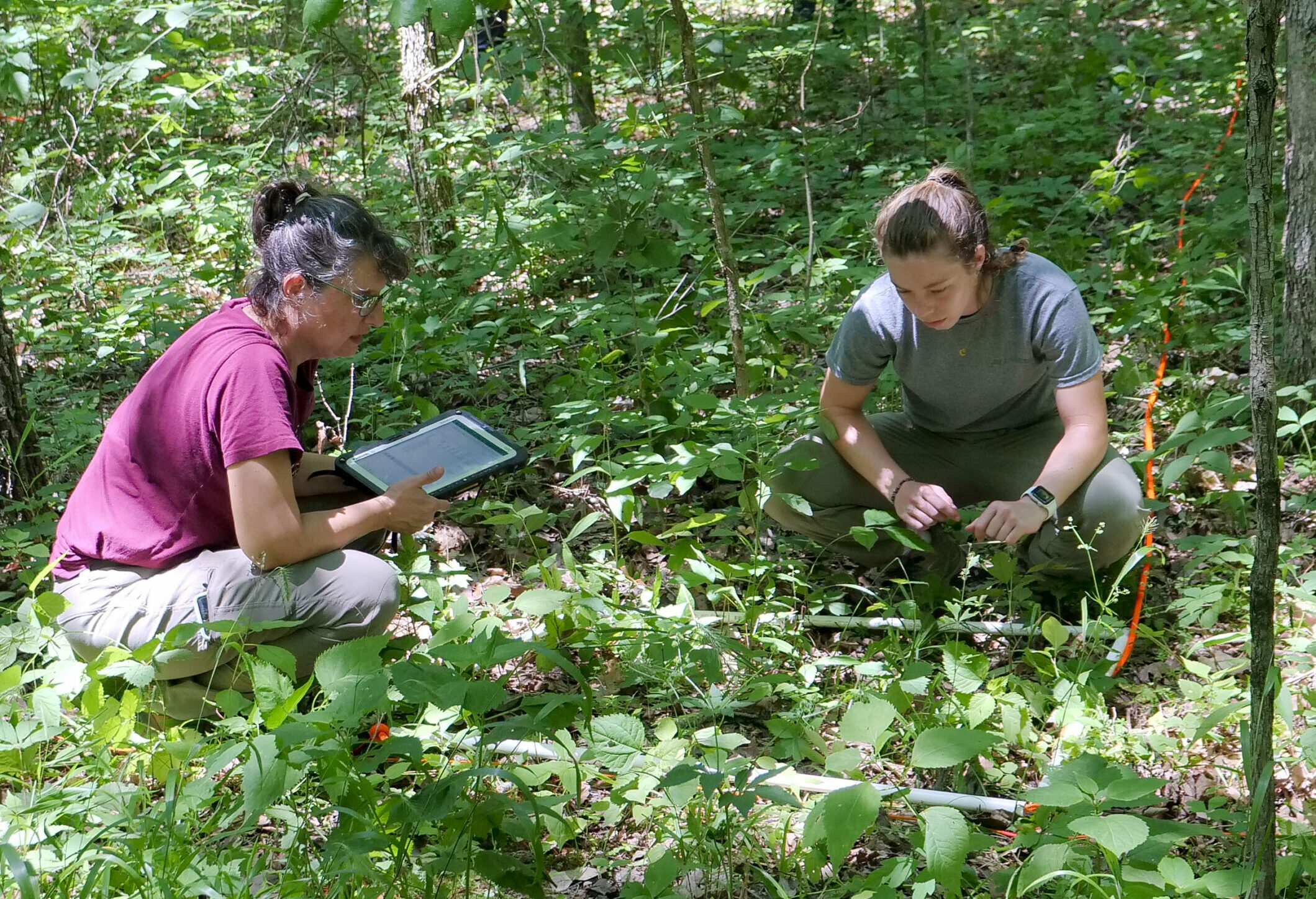
Project Overview
In 2018, we started ecological monitoring to gather baseline data on our woodlands. Simultaneously, we were aggressively removing the invasive Amur honeysuckle from our property and studied vegetation shifts resulting from its removal. Our studies weren’t limited to plants; we began faunal surveys that included macroinvertebrates, amphibians, and reptiles, like salamanders, to gauge forest health. Our project includes understanding the diverse tree canopies and the mix of native and invasive species in the understory. This allows us to monitor threats and evaluate the impacts of our management choices.
Our approach
Fifty meter transects are set up at each monitoring site. Transects are monitored 3 times a year for 2 years, and then rested for 2 years. Along each transect, 4 plots (4 m2) are sampled for herbaceous vegetation and seedlings. Soil data is collected at the center of each transect. The amount of sunlight coming through the canopy is also measured along each transect. Tree data are collected along the transect and used to calculate density and basal area. Tree sapling and snag data are also collected. Six pitfall traps are located along each transect and macroinvertebrate sampling occurs annually. Circles (radius 7.5 m) at both ends of transects are surveyed for reptiles and amphibians in spring, summer and fall.
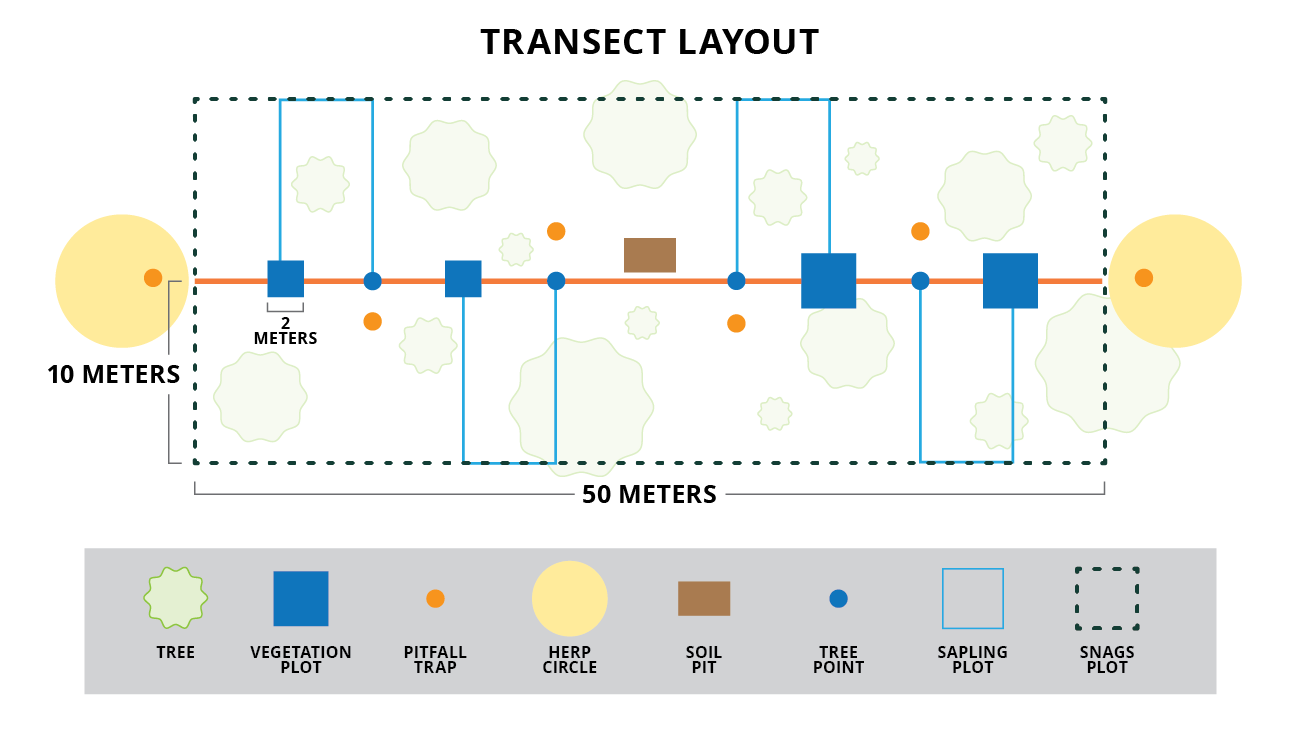
Researchers
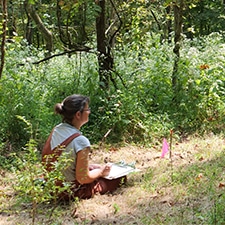
Jennifer Mansfield
Research Specialist | Greenacres Foundation
Jennifer is the Ecology Research Specialist at Greenacres. Her educational background includes a B.S. in Biology from the University of Dayton and an M.S. in Plant Biology from The Ohio State University. She spent a number of years in higher education and joined the Greenacres team in 2018. She focuses on woodland ecology, ecosystem restoration and the application of ecological principles to agricultural systems. One of her favorite places to be is in the woods during spring wildflower season.

Zach Marcum
Land Manger | Greenacres Foundation
Zach is the Land Manager at Greenacres where he focuses on the conservation of natural areas and resources. He works alongside the research staff to develop and implement plans for maintaining high quality, resilient ecological communities. Prior to Greenacres, Zach worked in county parks where he gained experience in invasive plant control, ecological restoration projects, prairie/grassland management, and wildlife management. Zach greatly enjoys transforming landscapes dominated by undesirable plants to communities that support a variety of native wildlife.
Research Updates
Contact Us
Department Director
Chad Bitler

